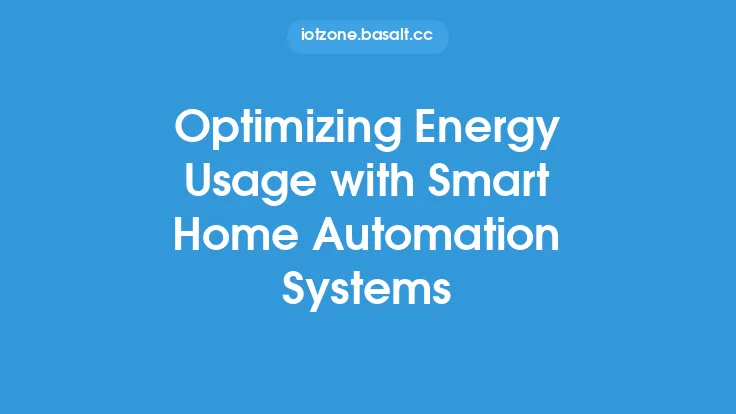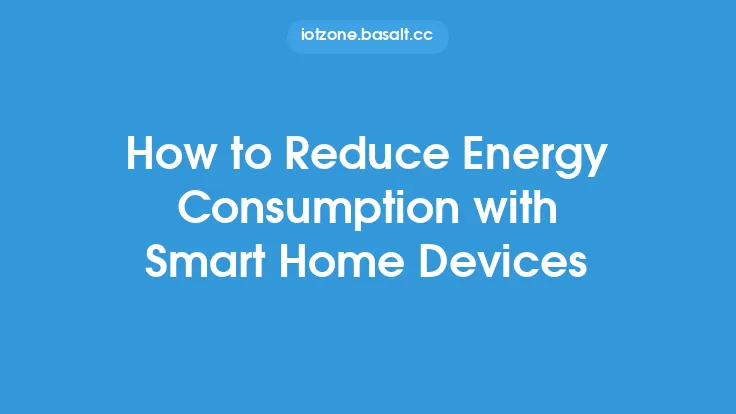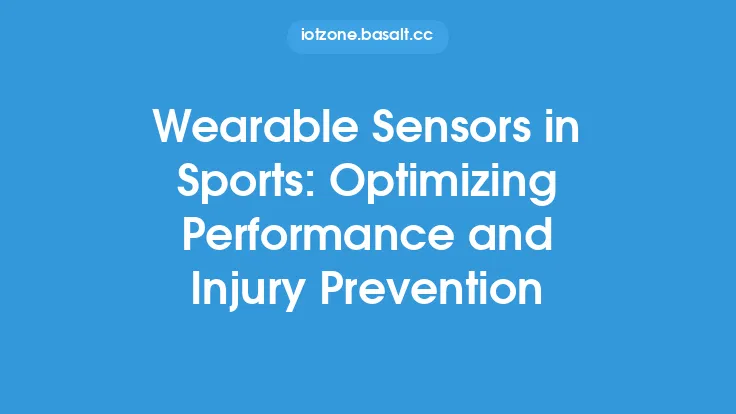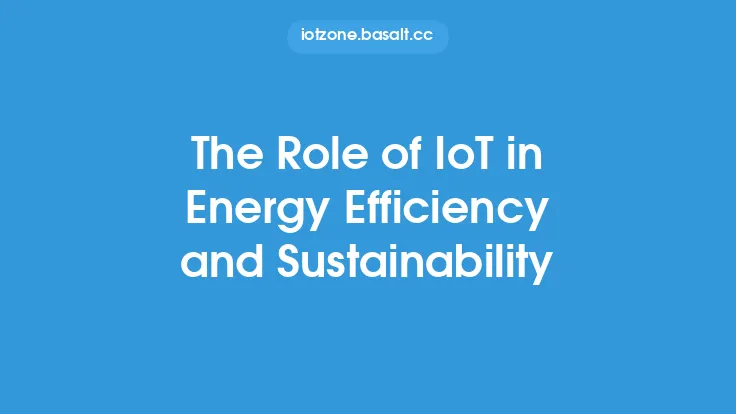The increasing demand for energy has led to a significant rise in energy consumption, resulting in higher energy costs and a substantial environmental impact. To mitigate this, organizations and individuals are turning to innovative solutions that can optimize energy consumption. One such solution is the integration of IoT sensors and analytics in energy management systems. This technology has the potential to revolutionize the way energy is consumed, making it more efficient, sustainable, and cost-effective.
Introduction to IoT Sensors and Analytics
IoT sensors and analytics are being increasingly used in various industries to optimize energy consumption. These sensors can be installed in buildings, homes, and industrial settings to collect data on energy usage patterns, temperature, humidity, and other environmental factors. The collected data is then analyzed using advanced analytics tools to identify areas of energy inefficiency and provide insights on how to optimize energy consumption. The use of IoT sensors and analytics in energy management systems can help reduce energy waste, lower energy costs, and minimize the environmental impact of energy consumption.
How IoT Sensors and Analytics Work
IoT sensors are small devices that can be installed in various locations to collect data on energy usage patterns. These sensors can be connected to the internet, allowing them to transmit data to a central server or cloud-based platform for analysis. The data collected by IoT sensors can include information on energy consumption, temperature, humidity, and other environmental factors. Advanced analytics tools are then used to analyze the collected data, identifying areas of energy inefficiency and providing insights on how to optimize energy consumption. The analytics tools can also be used to predict energy demand, detect energy waste, and identify opportunities for energy savings.
Benefits of Using IoT Sensors and Analytics
The use of IoT sensors and analytics in energy management systems can provide numerous benefits, including reduced energy costs, improved energy efficiency, and a minimized environmental impact. By identifying areas of energy inefficiency and providing insights on how to optimize energy consumption, IoT sensors and analytics can help organizations and individuals reduce their energy waste and lower their energy costs. Additionally, the use of IoT sensors and analytics can help improve the overall energy efficiency of a building or industrial setting, reducing the need for energy-intensive systems and equipment.
Technical Requirements for IoT Sensors and Analytics
The technical requirements for IoT sensors and analytics in energy management systems can vary depending on the specific application and use case. However, some common technical requirements include the need for reliable and secure data transmission, advanced data analytics capabilities, and integration with existing energy management systems. The IoT sensors used in energy management systems must also be able to withstand various environmental conditions, such as temperature and humidity fluctuations, and be able to transmit data accurately and reliably. Additionally, the analytics tools used to analyze the collected data must be able to handle large amounts of data and provide real-time insights on energy consumption patterns.
Real-World Applications of IoT Sensors and Analytics
IoT sensors and analytics are being used in various real-world applications to optimize energy consumption. For example, in commercial buildings, IoT sensors can be used to monitor energy usage patterns and identify areas of energy inefficiency. The collected data can then be analyzed using advanced analytics tools to provide insights on how to optimize energy consumption, such as adjusting lighting and temperature settings. In industrial settings, IoT sensors can be used to monitor energy usage patterns and detect energy waste, allowing organizations to take corrective action to reduce their energy consumption. Additionally, IoT sensors and analytics can be used in residential settings to help homeowners optimize their energy consumption and reduce their energy costs.
Challenges and Limitations of IoT Sensors and Analytics
While IoT sensors and analytics have the potential to revolutionize the way energy is consumed, there are several challenges and limitations that must be addressed. One of the main challenges is the need for reliable and secure data transmission, as well as advanced data analytics capabilities. Additionally, the integration of IoT sensors and analytics with existing energy management systems can be complex and require significant technical expertise. Furthermore, the use of IoT sensors and analytics can also raise concerns about data privacy and security, as well as the potential for cyber attacks and data breaches.
Future Directions for IoT Sensors and Analytics
The future of IoT sensors and analytics in energy management systems is promising, with ongoing advancements in technology and increasing adoption across various industries. One of the key future directions is the integration of IoT sensors and analytics with other technologies, such as artificial intelligence and machine learning, to provide even more advanced insights on energy consumption patterns. Additionally, the use of IoT sensors and analytics in energy management systems is expected to become more widespread, with increasing adoption in residential, commercial, and industrial settings. Furthermore, the development of new IoT sensors and analytics tools is expected to continue, providing even more advanced capabilities for optimizing energy consumption and reducing energy waste.
Best Practices for Implementing IoT Sensors and Analytics
To get the most out of IoT sensors and analytics in energy management systems, it is essential to follow best practices for implementation. One of the key best practices is to conduct a thorough energy audit to identify areas of energy inefficiency and determine the most effective locations for IoT sensor installation. Additionally, it is essential to select IoT sensors and analytics tools that are reliable, secure, and compatible with existing energy management systems. Furthermore, it is crucial to provide training and support for personnel responsible for monitoring and analyzing the data collected by IoT sensors, as well as to establish clear goals and objectives for energy savings and reduction. By following these best practices, organizations and individuals can maximize the benefits of IoT sensors and analytics in energy management systems and achieve significant energy savings and reduction.





